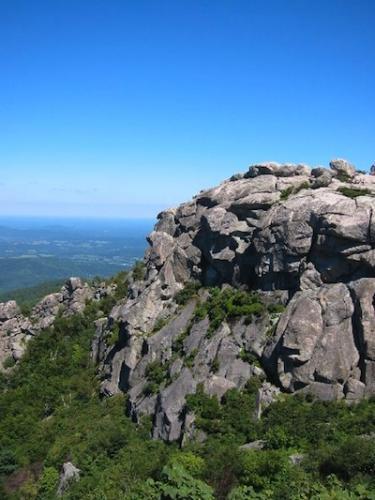Concerns over impacts visitors are causing to rock outcrops at Shenandoah National Park have prompted the park to develop a Rock Outcrop Management Plan that seeks to "protect, restore, and perpetuate rock outcrops and natural resources associated with the rock outcrops while providing a range of recreational opportunities for visitors to experience."
The plan, three years in the making, is necessary because recreational climbing on outcrops has led to "severe degradation of vegetation and soils at some rock outcrops, including impacts to rare species and communities," notes the park's environmental assessment outlining the management plan.
"Though outcrops represent only a small area of the park, they are some of the largest outcrops in the region and serve as islands of unusual habitat supporting rare species assemblages," the assessment explains. "Given the relatively high elevation of many rock outcrops in the park, these areas provide habitat for unique communities of species that are typically only found in northern regions.
"... one of the park’s most popular hiking and climbing destination, Old Rag Mountain, has a summit area rich in rare species which is visited by an estimated 50,000 people annually. Visitation at one of the park’s most accessible peaks (Stonyman Mountain) averaged 980 people per week during the summer and fall of 2002," the document notes. "One popular climbing guide identified 27 separate rock climbing areas within the park, describing each area and the numerous climbing routes in detail."
The park's preferred alternative proposes to limit visitor access to some outcrops, and specific climbing regulations would be adopted "to protect the park's natural and cultural resources and values while providing climbing-related recreational opportunities for park visitors." These guidelines would address rock climbing, bouldering, and ice climbing, the EA states.
For specific details on the proposed regulations, you can find the EA at this site.
In compiling the EA, the park staff spent three years inventorying rock outcrops and cliff areas in the park, and assessing how climbers were using them and whether those activities led to any impacts. Part of that work involved input from hikers, climbers, nature enthusiasts, and other park supporters who could be affected by park management decisions.
Comments on the plan are being taken through December 13 at this site.




Add comment